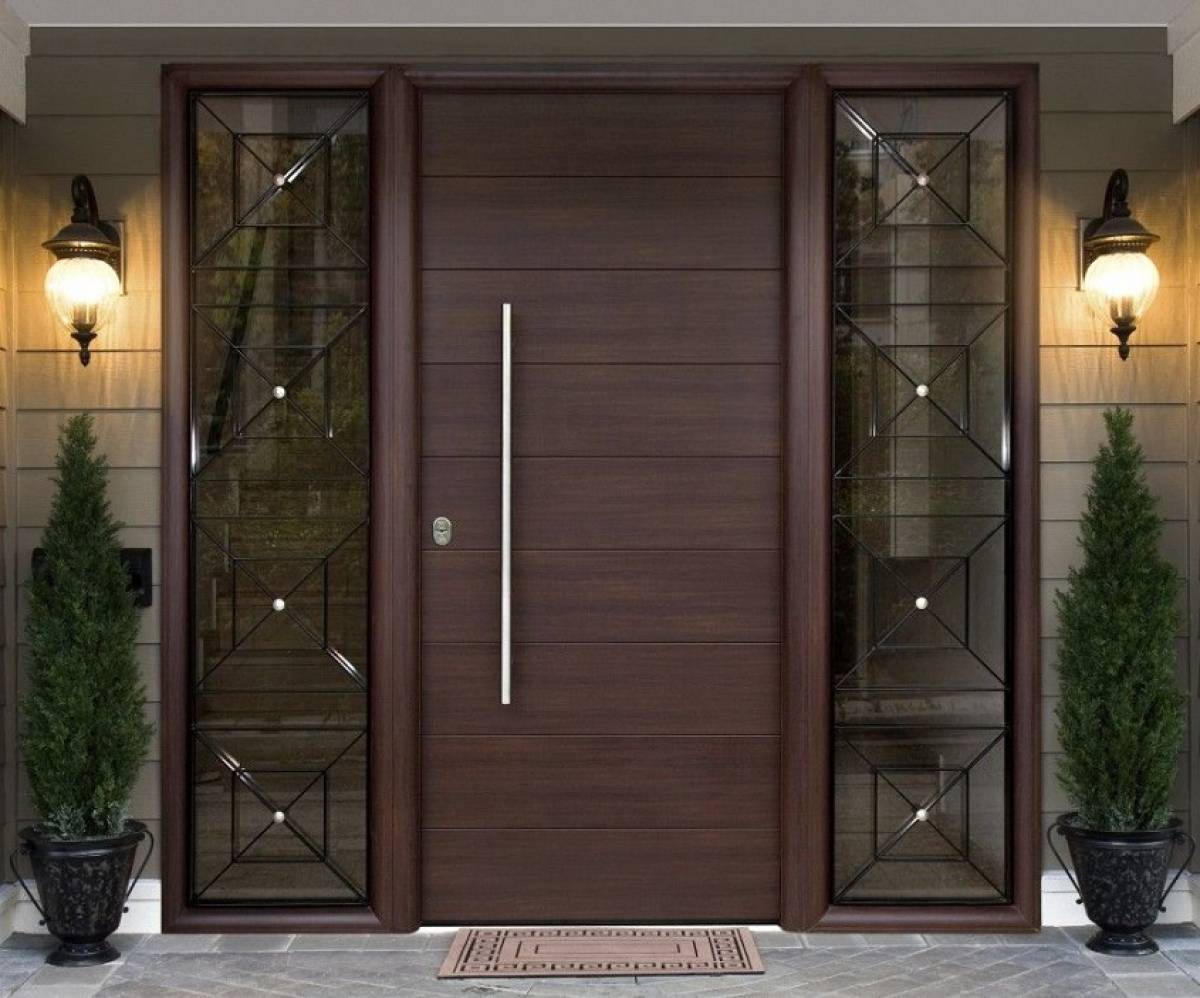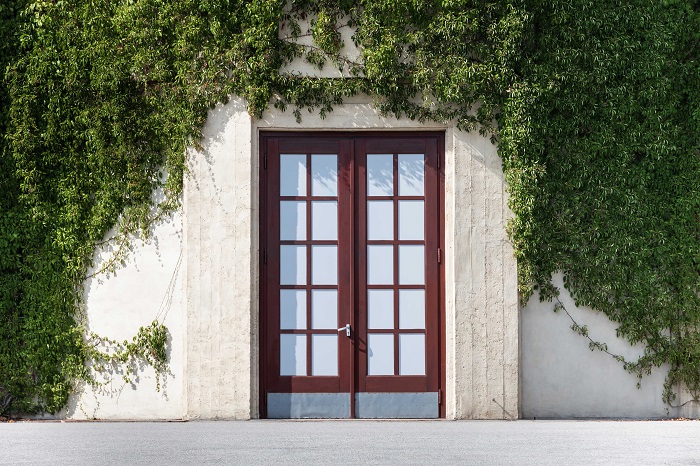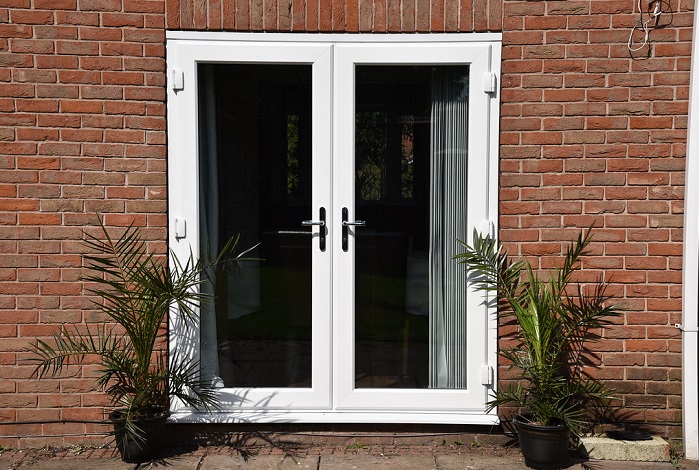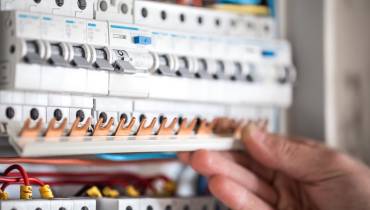The Best Door Styles for Modern Homes

Modern entrance door.
Our doors separate the inside from the outside, define the interior, provide privacy, protect from noise, and light our homes with beauty and style.
But there are different types of doors you can use for your home. It’s important to familiarize yourself with the different types of door designs and styles for homes to stay informed and make informed purchase decisions.
For example, entrance doors and interior doors play a crucial role in ensuring security and privacy in various areas of the house. You can’t use any door for entrances or pick any door for your home interiors.
You’ll need to consider factors like strength, durability, serviceability, weather resistance, cost, materials, and location when choosing a door type.
So, what are the different types of doors for modern homes?

Main Types of Doors Used in Modern Homes
Different types of doors offer different levels of functionality and often give a room an individual look. When you choose the right door type and design, it can not only make your home more attractive, but also more secure.
Here’re the main types of doors for homes:
1. Entry Doors
All homes have exterior doors, and all exterior doors share some similar properties. Each outer front door is sturdy and has no holes.
The door swings inward, and you can equip it with a door handle and bolts for more security.
Beyond that, it's a matter of personal preference for style and safety. Wood has long been the material of exterior doors because it is sturdy, durable, and painted. However, the material requires regular care.
In recent years, insulated steel and fiberglass doors are used more and more for homes. Although steel and fiberglass are of different types, they both must be painted. They provide great resistance to the elements.
2. Interior doors
Interior doors separate the room and define the space. Because interior doors do not provide security or the need to withstand rain and sun, they are usually lighter and made of less important material than exterior doors.
Interior doors with perforated cores made of pressed board or veneered wood are standard and offer the possibility of providing multiple entries for the home economically.
The disadvantage of perforated doors is that they are easily damaged and slow down sound transmission. Hard-core glass (MDF) interior doors eliminate both those drawbacks, but they cost three to four times more than cavity doors.
3. Dutch Doors
The Dutch door is a type of outer door that is designed with two halves, so that the top and bottom work separately. You can, however, open and close the door with the two halves locked together.
Dutch doors give a home a lot of charm and individuality, and are also quite functional. If you have children or pets, the Dutch entry at the bottom can be closed to keep them inside and safe. At the same time, with the top half open, you can still get some fresh air.
Even though the two halves of the door can be tightly locked and protect from the elements, still outside air can sip in or escape. If you live in a place with harsh weather conditions, you should confine Dutch doors to the sheltered side of your house or just avoid Dutch doors completely.
4. French Doors
French doors are double doors made mostly of glass. The double or two doors opened inward. When closed, the double doors meet, with one door securely attached to the jamb at the top and bottom.

French doors are commonly used as exterior doors as they provide a lot of extra light to the room - especially if the room has no windows or only a few windows. With all the light they provide, French doors can make it harder for a space to keep warm or cool because of the door's glass.
5. Pocket Doors
A pocket door is an interior sliding door that disappears into the wall when opened.
To slide the door, turn the key to use it as a handle and then close it. The bolt can also fit into the fixing plate on the door frame as a kind of lock.
Pocket doors are better when space is limited or when the swing door collides with other elements in the room.
One of the most frustrating aspects of pocket doors, however, is when they get locked in. However, if you handle the doors carefully, they should provide years of service without a hitch.
6. Garage Doors
If your house has a garage, you can install the door of your choice between home and garage.
To protect families from fire, most local building codes that mimic the International Housing Code (IRC) require concrete pits or beehives at least 1 to 3/8 inch thick and with a minimum fire protection duration of 20 minutes.
7. Storm Doors
Storm doors are other doors that are installed on the outside of exterior doors. The goal is to protect the exterior door from bad weather conditions and reduce currents in the room.
Storm doors designs are such that it is to be installed in early fall and removed in spring. While some homeowners find this a daunting annual chore, the benefits of storm doors are plenty and obvious.
In Conclusion
When building or designing a home, you can easily focus only on small details like accessories and paint colors. However, it is essential not to overlook one of the room's most significant design elements — the door.
Take care to choose the right kind of door style and you will transform your home aesthetics and enhance your living room and interior spaces.
With the level of personalization available today, you are bound to find the perfect door for your area if you look for it.

![9 Tips for Managing Your Online Writing Projects Efficiently [node:titile]](/sites/default/files/styles/thumbnail_rectangle/public/open-book-laptop-online-writing-tips.jpeg?itok=iq4PIT7b)


















